What is Hamas? Part I
A group that started as a Islamic service organization and turned into one of Israel's most implacable enemies.
What is Hamas? The short answer is a violent and despicable terrorist organization that is bent of the destruction of Israel and Jews around the world. They were founded by a handful of people connected to the Muslim Brotherhood. This brutal group has plagued both Israel and the US since 1987 and ruled in the Gaza Strip as a one party dictatorship since 2007.
The Early Years
When Israel occupied the Gaza Strip after the Six-Day War, they started a concerted effort to hunt down the members of the secular Palestinian Liberation Organization (PLO), but did not continue the harsh restrictions against Islamic activists that had been in effect since the 1948 occupation of Gaza by Egypt. From the Israeli perspective, the Muslim Brotherhood members in Gaza did not take an active part in the resistance, preferring to focus on social and religious reforms and on restoring Islamic values. In fact, Israel for many years tolerated and at times even encouraged Islamic activists and groups as a counterweight to the secular nationalists of the PLO and its dominant faction, Fatah. Among the Islamists that benefited from this new found freedom was Sheikh Ahmed Yassin, leader of the Muslim Brotherhood in Gaza.
Ahmed Yassin was born in al-Jura, a small village near the city of Ashkelon during the British Mandate of Palestine. His date of birth is not known for certain: according to his Palestinian passport, he was born on June 1, 1936. His father, Abdullah Yassin, died when he was three years old. He and his entire family settled in the al-Shati Refugee Camp after they fled during the 1948 Arab-Israeli War. When he was 12, he sustained a severe spinal injury while wrestling a friend. The damage to his spinal cord rendered him a quadriplegic for the rest of his life. Although Yassin attended al-Azhur University in Cairo, he could not stay there long because of his deteriorating health and was educated at home where he read widely, particularly on religion, philosophy, politics, sociology, and economics. During this time, he began delivering weekly sermons after Friday prayers, drawing large crowds of people. In 1973 Yassin formed a charity called Mujama al-Islamiya (Islamic Center), which was recognized by Israel in 1979. Israel allowed the organization to build mosques, clubs, schools, and a library in Gaza. Yitzhak Segev, the acting governor of Gaza in 1979, said he had no illusions about Yassin's intentions, having watched, as Israel’s military attaché in Iran, an Islamist movement topple the Shah. However, according to Segev, Yassin and his charity were "100% peaceful" towards Israel during this time, and Segev and other Israeli officials feared being viewed as an enemy of Islam. Segev maintained regular contact with Yassin, he met with him around a dozen times, and arranged for Yassin to be taken to Israel for medical treatments. Also, Segev said, at the time, Fatah was "our main enemy.” Islamists frequently attacked secular and leftist Palestinian movements, including Fatah, but the Israeli military avoided getting involved in those quarrels. It stood aside, for example, when Mujama al-Islamiya activists stormed the Red Crescent headquarters in Gaza, but Segev did send soldiers to prevent the activists from burning down the home of the head of Red Crescent. In 1984 the Israeli army received intelligence that Yassin's followers were collecting arms in Gaza, Israeli troops raided a few mosques and found a cache of weapons. Yassin was arrested, but told his interrogators the weapons were meant to be used against the PLO, not Israelis. Around the time of Yassin's arrest, Avner Cohen, an IDF religious affairs official, sent a report to senior military officers and civilian leadership in Gaza advising them of the dangers of the Islamic movement. However, this report and similar ones were ignored. Former military intelligence officer Shalom Harari said the warnings were ignored out of neglect, not a desire to strengthen the Islamists.
In May of 1985, Yassin was released as part of the Jibril Agreement, which saw Israel release 1,150 prisoners (including Kozo Okamoto who was part of the terrorist group that killed 28 people in Lod Airport in 1972), in exchange for three IDF soldiers. Following his release, he set up al-Majd, headed by former student leaders Yahya Sinwar and Rawhi Mushtaha, they were tasked with handling internal security, including hunting for local informants. About the same time, he ordered another former student leader Salah Shehade to set up al-Mujahidun al-Filastiniun (Palestinian fighters), but its militants were quickly rounded up by Israeli authorities and any weapons they possessed were confiscated.
The Spark
On December 9, 1987, four Arabs were killed after an IDF truck carrying tanks collided with a civilian car, killing four Arab workers. Many Arabs said the collision was a deliberate response to the killing of an Israeli in Gaza days earlier. However, Israel denied that the crash was intentional or coordinated. The Arabs responded with massive protests, general strikes, boycotts of Israeli Civil Administration institutions, a boycott against Arabs working in Israeli settlements, refusal to pay taxes and widespread violence. The violence included throwing stones and Molotov cocktails at IDF troops, and was extensive in both the Gaza Strip and the West Bank. This came to be known as the First Intifada (literally Intifadat al-Hijara or the Stone Uprising). The passions unleashed by the Intifada were a boon for every militant Arab and Islamist organization in the Occupied Territories and every group tried to grab as much of that passion as it could.
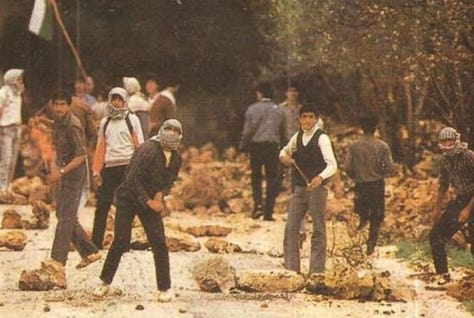
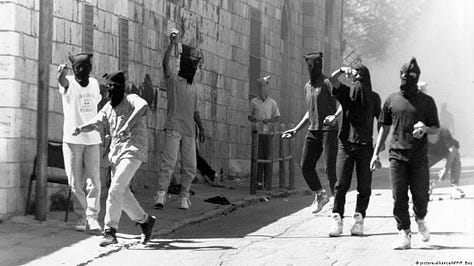
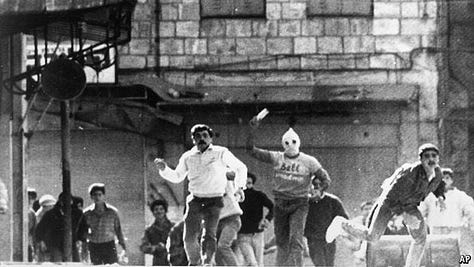
On December 10, 1987, several members of the Muslim Brotherhood, including Abdel Aziz Ali Abdul Majid al-Rantisi, Mahmoud al-Zahar and Mohammad Taha, convened at Yassin's house and decided that they too needed to react, as the riots of the First Intifada spread across the occupied territories. What the group established was essentially the Muslim Brotherhood’s political arm in Gaza. It was originally called HMS an acronym for Harakah al-Muqawamah al-Islamiyyah (Islamic Resistance Movement), but was soon changed to Hamas, which includes the original acronym, but is also the Arabic word for zeal, strength, or bravery. At the time, Hamas’s purpose was to counter Palestinian Islamic Jihad (PIJ), another organization whose commitment to violently resisting Israel threatened to draw Palestinians’ support away from the Brotherhood. The new group was supported by Brotherhood-affiliated charities and social institutions that had already gained a strong foothold in the occupied territories. Hamas’ first appearance on the Israeli radar was a leaflet in late December 1987, that accused the Israeli intelligence services of undermining the moral fiber of Palestinian youth as part of a Mossad recruitment effort of what Hamas termed "collaborators." Nonetheless, the Israeli military and intelligence services were still focused on Fatah, and continued to maintain their contacts with Gaza-based Islamic activists, including al-Zahar, who met with Israeli Defense Minister Yitzhak Rabin as part of "regular consultations" between Israeli officials and Palestinians not linked to the PLO.
In the first years of the Intifada, Hamas violence was restricted to Palestinian collaborators and individuals it defined as "moral deviants," i.e. drug dealers and prostitutes, or people who engaged in “loose behavior” such as seducing women in hairdressing salons with alcohol. Hamas leaders likened their rooting out of collaborators to what the French resistance did during World War II, in 1989 alone they executed more than 150 people. Yassin and the others in the Hamas Politburo knew that if they were not more involved in operations against Israel, then they would lose supporters to their rivals the PIJ and the PLO. Therefore, they needed to break away from the Brotherhood, who refused to engage in violence against Israel. They also hoped that by keeping its militant activities separate, Israel would not interfere with its social work.
In August 1988, Hamas published their charter calling for the destruction of Israel and the establishment of an Islamic society in the entirety of Palestine “from the river to the sea”. Hamas's first strike against Israel came in the spring 1989 when it abducted and later killed IDF soldiers Avi Sasportas and Ilan Saadon. The kidnappings were carried out by Unit 101, a unit dedicated to the kidnapping of Israeli soldiers. The unit was commanded by Mahmoud Abdel Rauf al-Mabhouh. The discovery of Sasportas' body triggered an extremely violent Israeli response, hundreds of Hamas leaders and activists were arrested, and Hamas was outlawed. This mass detention of activists, together with a further wave of arrests in 1990, effectively dismantled Hamas and forced it to adapt. Its command system became regionalized and compartmentalized to make its operative structure more diffuse, and minimize the chances of being detected.
A Second Spark
The next spark was an incident which took place in the al-Aqsa compound on the Temple Mount on October 8, 1990, during the third year of the First Intifada. Just before the second of the five daily prayers for Muslims, a group called the Temple Mount Faithful (a Jewish group that advocates for the construction of the Third Temple on the Mount), arrived at the Temple Mount to lay the cornerstone for the new temple. Mass riots erupted and in the ensuing clashes, 17 Arabs were killed and 150 were wounded by Israeli security forces. 20 Israeli civilians and police were also wounded. The next day Hamas declared every Israeli soldier a target and called for a "jihad against the Zionist enemy everywhere, in all fronts and every means.” In the summer of 1991 Hamas reorganized its units from al-Mujahidun al-Filastiniun into a military wing called the Izz ad-Din al-Qassam Brigades led by Yahya Ayyash. Ayyash, an engineering graduate from Birzeit University (located in the West Bank), was a skilled bomb maker earning him the nickname al-Muhandis ("The Engineer"). He is one of the driving forces in Hamas' use of suicide bombings, arguing that "we paid a high price when we only used slingshots and stones. We need to exert more pressure, make the cost of the occupation that much more expensive in human lives, that much more unbearable". He was responsible for making all the bombs detonated by Hamas suicide bombers in the first years of Hamas activities.
In December 1992 Israel responded to the killing of a border police officer by deporting 415 members of Hamas and Palestinian Islamic Jihad (PIJ) to Southern Lebanon, which at the time occupied by Israel. While in Lebanon Hamas established contacts with Hezbollah, learning to construct suicide and car bombs (Hezbollah had been using the tactic since early 1983). The first Hamas suicide bombing took place at Mehola Junction in the West Bank on April 16 1993, when a Hamas bomber parked a car rigged with propane tanks and four hand grenades between one civilian bus and one military bus. Aside from the bomber, the blast killed a Palestinian who worked nearby and wounded nine, including eight Israeli soldiers. The bomb design was flawed but Ayyash and Hamas would soon learn from their mistake and manufacture more effective bombs.
The years between the intifadas (1993-2000), were marked by intense diplomatic activity between Israel and Palestinians as well as the creation of the Palestinian National Authority (PA). In this period, suicide bombings of Israeli buses and crowded spaces became a regular tactic, particularly for Hamas
The Blaze Begins
On February 25, 1994, Baruch Goldstein, a Jewish-American and follower of the ultra-Zionist Meir Kahane, who lived in the settlement of Kiryat Arba near Hebron. Walked into the Ibrahimi Mosque at the Caves of the Patriarchs with his brother's IDF issued rifle, and killed 29 people, wounding 128, before being beaten to death by the survivors. An additional 19 Palestinians were killed by Israeli forces in the ensuing riots. Israeli Prime Minister Yizhak Rabin condemned the massacre but Hamas swore to avenge the deaths.
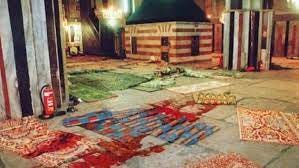

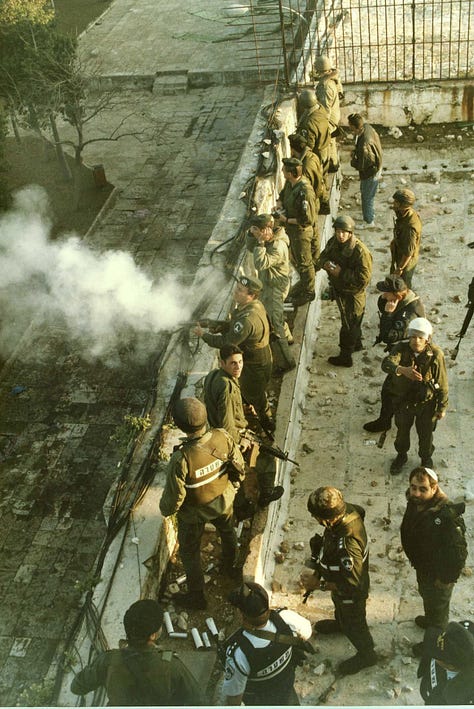
In a communique it announced that if Israel didn't discriminate between "fighters and civilians" then it would be "forced to treat the Zionists in the same manner. Treating like with like is a universal principle."
The Hebron massacre had a profound effect on Hamas' militancy. The killings laid to rest an internal debate within Hamas on the usefulness of indiscriminate violence. In the original Hamas internal documents there is an explicit prohibition against indiscriminate harm to helpless people, but Yassin and the leadership thought the massacre released them from this taboo and based on citations from the Koran, introduced a dimension of measure for measure. On April 6, 1994, a suicide bomber blew up his car at a crowded bus stop in Afula, killing eight and wounding 34. A week later a Hamas bomber detonated himself on a bus in Hadera, killing five and wounding 30. On October 9, Hamas militants kidnapped IDF soldier Nachshon Wachsman, (he was later killed in a rescue attempt). On October 19, Hamas terrorist Saleh Abdel Rahim al-Souwi (who had joined Hamas after his older brother Hasin was killed in a shootout with Israeli forces in 1989), boarded a bus in Tel Aviv and as it neared one if its last stops, he detonated a bomb packed with 45 pounds of explosives surrounded by screws and nails and hidden in a bag between his feet. The blast killed 22 people and wounded 50.

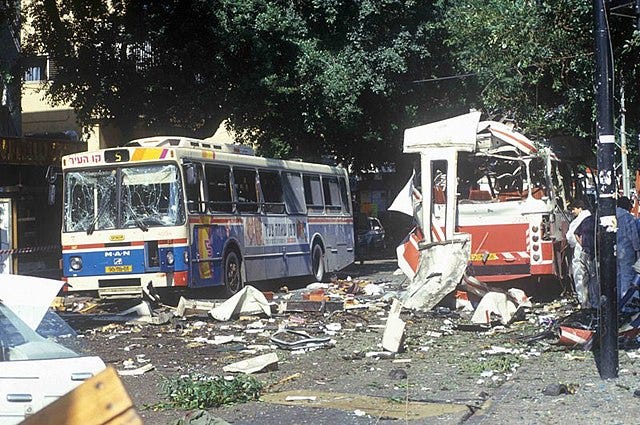
The day after the bombing, his family threw a neighborhood party celebrating his "martyrdom”. On November 11, Hamas member Hisham Ismail Hamad rode a bicycle into a IDF check point and detonated the explosives strapped to his body. Three IDF soldiers were killed and six Israeli soldiers as well as six Arabs were wounded. On November 30, Wahib Abu Rub, a member of Hamas entered the town of Afula where he encountered 19-year-old female IDF sergeant Liat Gabai, he came up behind her and hit her in the head several times with a pickaxe, killing her. On December 25, 13 people are wounded when a Hamas suicide bomber blows himself up near the Binyanei Ha Uma National Conference center.
These attacks did not stop Israeli Prime Minister Yitzhak Rabin from continuing the peace process. Rabin and PLO Chairman Yasser Arafat sign an agreement known as the Oslo Accord in Washington DC on September 13, 1993. He also signed a peace treaty with King Hussein of Jordan on October 26, 1993 and another Oslo agreement, known as Oslo II on September 28, 1995.
Becoming an inferno
The efforts at peace did not impress Hamas who continued attacks even after the treaties signed by the PA, Jordan and Israel. Nor did it even slow the attacks, in fact it brought together two of the most dangerous terrorist organization at the time; Hamas and Palestinian Islamic Jihad. On January 25, 1995, at 9:30 am, a Palestinian Islamic Jihad suicide bomber, disguised as an Israeli soldier, approached the bus stop at the Beit Lid junction in central Israel. The bus stop was full of Israeli soldiers who were on their way to their bases after their weekend vacation. The suicide bomber walked into the crowd and detonated the hidden explosives belt he was wearing. About three minutes later a second suicide bomber exploded at the same spot, killing and injuring people wounded in the first explosion, as well as bystanders who had rushed to the scene to assist the victims of the first explosion. 21 people were killed and 68 wounded.
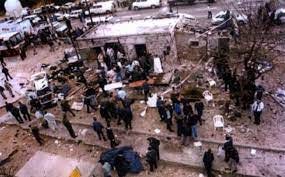
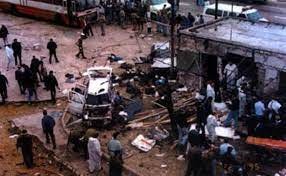
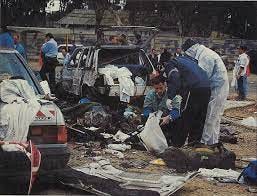
There was another bomb left at the scene for a third bomber, who never arrived, that was supposed to kill Rabin and the Shen Bet agents accompanying him. The bomb was later recovered, and provided investigators with more evidence implicating Yahya Ayyash.
On the morning of April 9 1995, Khaled Mohammed Khatib, a construction worker from the Nuseirat refugee camp, sat in a car on the main highway running from Ashkelon to the Israeli settlements in the Gaza Strip. At 11:45 am, he rammed a bus carrying more than 60 Israeli soldiers and civilian passengers to the settlement of Kfar Darom. At the moment he rammed the bus, he flipped a trigger switch in the steering column, detonating a bomb in the car, seven people are killed and 52 passengers were wounded. Two hours later, Imad Abu Amouna drove another bomb laden car into a convoy of vehicles being escorted by police towards the settlement of Netzarim. Amouna was a originally a member of PIJ who had grown tired of waiting for his "martyrdom operation" and instead volunteered with Hamas. Nobody was killed, but thirty soldiers were wounded. Both bombs were designed by Ayyash. On July 24, a Hamas suicide bomber on a crowded bus near the Israel Diamond Exchange in Ramat Gan, detonated 33 pounds of TNT and nails packed into a steel pipe hidden in the briefcase he was carrying. Six Israelis were killed and 33 were wounded.
Using a bomb designed by Yahya Ayyash, the female Hamas suicide bomber, Sufian Jabarie, detonated herself on a commuter bus in the Jerusalem neighborhood of Ramat Eshkol.
Four people were killed and more than one hundred were wounded. Many of the victims were policemen on their way to work at the National Police Headquarters or college students on the way to the nearby Mount Scopus campus of Hebrew University. One of the victims was an American teacher from Connecticut, who was visiting Israel to gather material for her classes on Israeli history. Another victim was paralyzed from the neck down during the attack and remained attached to a respirator until he died in 2005.
On January 5, 1996, Israel finally caught up with the elusive master bomb maker Yahya Ayyash. They had been trying to assassinate him since he first appeared on the scene, but had been unable to gather enough intelligence to track his movements. However, Shin Bet learned (through means that remain classified to this day), that Ayyash had, on occasion, spent the night in the Gaza City home of Osama Hamad, a childhood friend of his.
Kamil Hamad, Osama’s uncle, had previously worked for Shin Bet and In October 1995, Shin Bet operatives approached Kamil Hamad. He demanded money and Israeli identity cards for himself and his wives in exchange for his help but changed his tune when Shin Bet operatives threatened to inform Hamas that he was working for Israeli intelligence. Hamad agreed to cooperate and was given a cell phone he was told was bugged. The Shin Bet did not tell Hamad that, in addition to eavesdropping devices, it also contained 15 grams of RDX explosive. Kamil Hamad gave the phone to his nephew, knowing that Ayyash regularly used Osama's phones. At 08:00 on January 5, 1996, Ayyash's father called him. Ayyash picked up the phone and talked with his father. Overhead, an Israeli plane picked up their conversation and relayed it to an Israeli command post. When it was confirmed that it was Ayyash on the phone, Shin Bet remotely detonated it, killing Ayyash instantly. The next day during over 100,000 Palestinians 11% of the population of Gaza, attended Ayyash’s funeral. Hamas vowed revenge, and it would come quickly, violently and bloody.
On February 25, 1996, a Hamas suicide bomber blew himself up outside the Ashklon bus station, killing two and wounded ten. At the same time in Jerusalem, another bomber detonated a bomb on a bus, killing 20 and wounding 80. On March 3, on the same bus route as the bombing five days before, a Hamas bomber blew himself up, killing 19 and injuring six others. The next day Hamas struck again. This time on the eve of the Jewish holiday of Purim (which commemorates the saving of the Jewish people from annihilation at the hands of an official of the Persian Empire named Haman). A Hamas suicide bomber blew himself up outside the Dizengoff Center, the largest mall in Tel Aviv, killing 13 and wounding 130 more. The attack was the fourth suicide bombing in Israel in nine days, bringing the death toll during that span to over 60. The cell that claimed responsibility for the four attacks, called itself "Disciples of the martyr Yahya Ayyash", stating the attacks were revenge for his assassination. A high price to be paid for the killing of one man.
This is the end of Part I, next week I will post Part II in my series on Hamas. I hope that everyone will share this post with as many people as possible. With the on going war against Hamas and the growing “protests” in support of this vile group, it is more important than ever to get the real truth out into the world. This war is totally and completely the fault of Hamas and the mounting causalities on both sides are squarely on the shoulders of the Hamas leadership. I would not be opposed to Israel taking out the Hamas leaders where ever they are in the world. Until next week, stand up to be counted as friends and supporters of Israel.
Chris





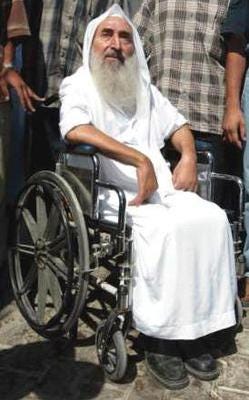
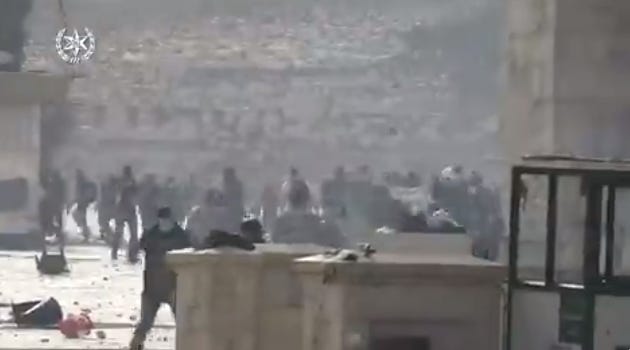

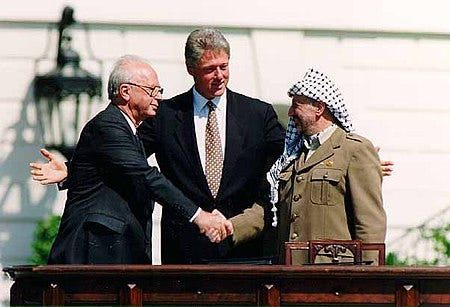
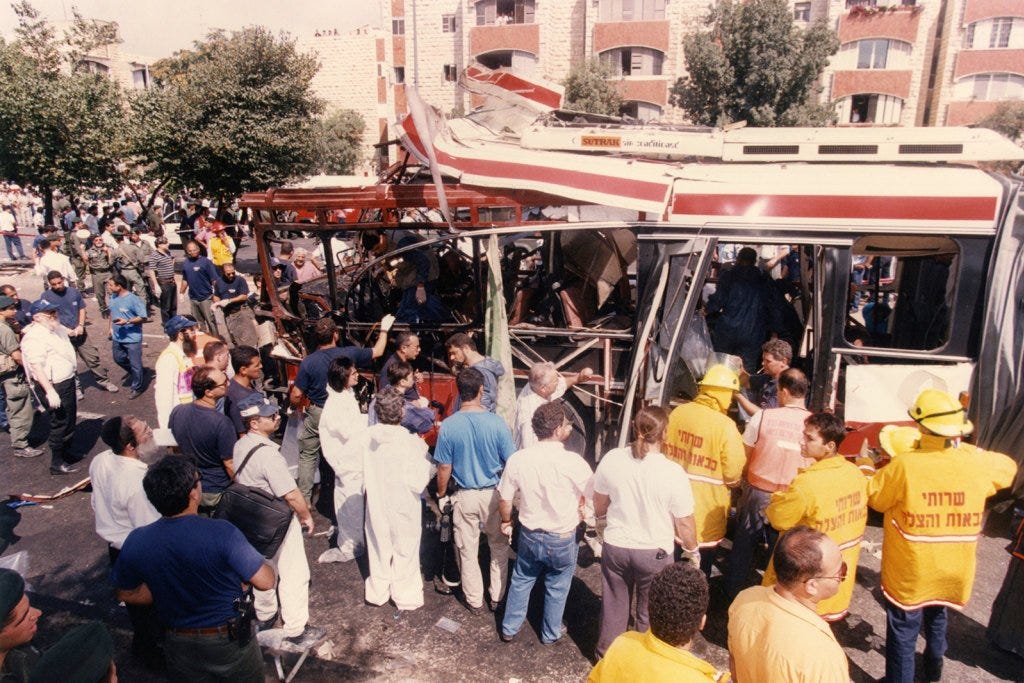
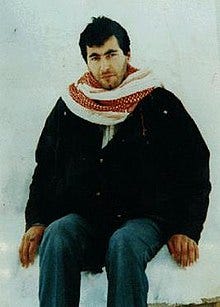

Fascinating stuff. Thanks for this, Chris!
I agree. Their history of violence is astounding. So much hate is just evil.